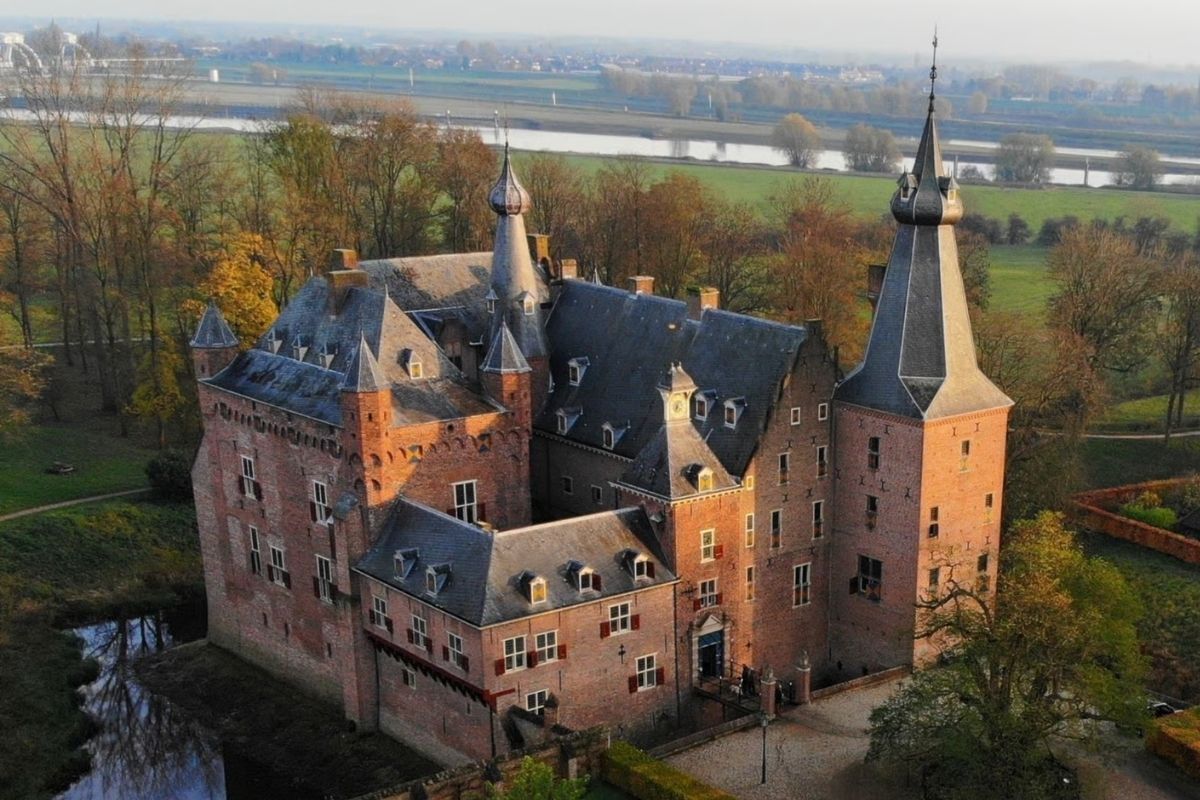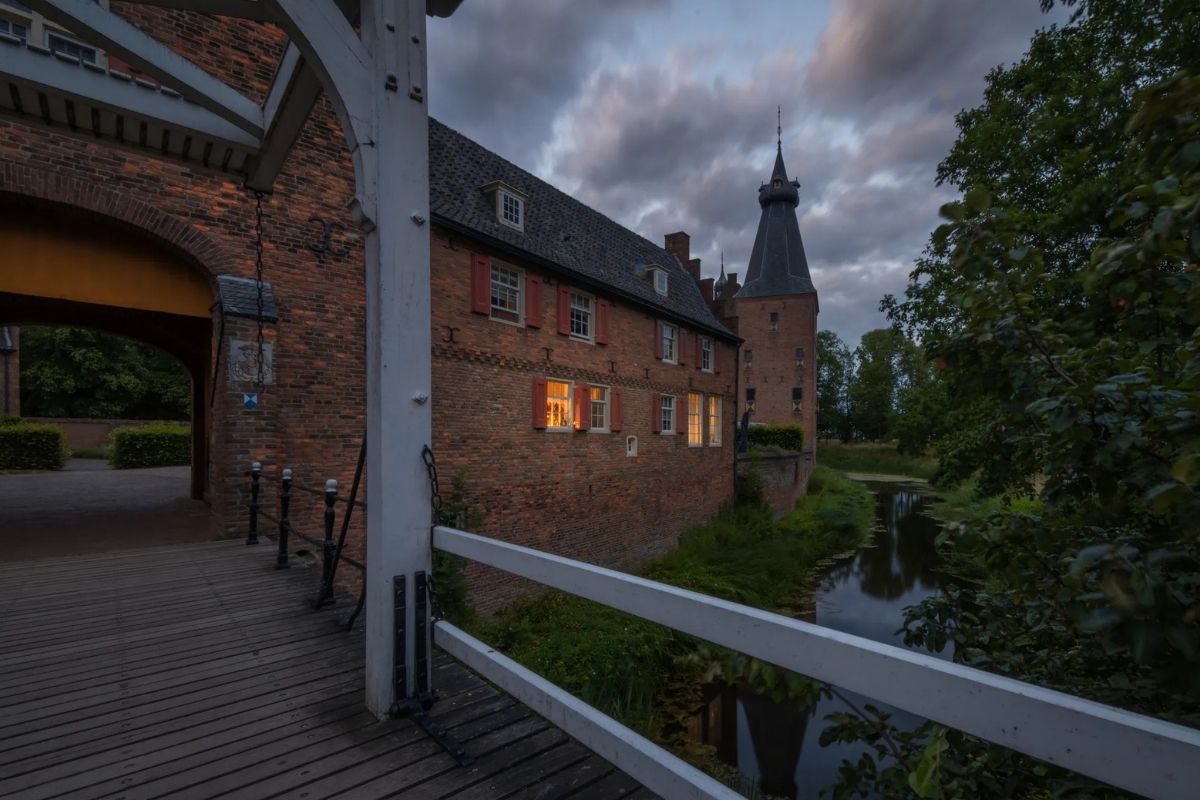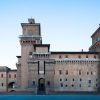Doorwerth Castle
Doorwerth Castle is a medieval fortress nestled in the Dutch countryside, with origins dating back to the 13th century. Over the centuries, this castle has seen war, abandonment, restoration, and a remarkable return to its former grandeur. Originally constructed as a wooden tower, it evolved into a stone stronghold that witnessed power struggles, aristocratic expansion, and strategic military use. Today, Doorwerth Castle stands as one of the best-preserved castles in the Netherlands. It serves not only as a symbol of regional resilience but also as a cultural and historical museum that brings the past vividly to life.
Visitors are drawn to Doorwerth for its commanding architecture, its connection to key moments in Dutch history, and its tranquil setting along the Rhine. With its moated defenses, lush gardens, and restored interiors, the castle offers a rich and immersive journey through the ages. It remains a destination that appeals equally to history enthusiasts, families, and anyone looking to experience the Netherlands’ heritage firsthand.
Location of Doorwerth Castle
Doorwerth Castle is located in the village of Doorwerth, within the province of Gelderland in eastern Netherlands. It lies approximately eight kilometers west of Arnhem, making it easily accessible for a day trip from several major cities in the region. The castle is situated on the banks of the Lower Rhine River, a location chosen for its strategic and defensive advantages. Today, that same location offers stunning river views and a peaceful natural setting.
The area surrounding the castle features a picturesque blend of wooded hills, open meadows, and floodplains. Visitors often take advantage of nearby walking and cycling routes that wind through the surrounding landscape, including nature reserves and the Veluwezoom National Park. The river, moats, and well-maintained gardens form a scenic frame around the fortress, contributing to its fairy-tale ambiance.
The castle estate includes not only the main building but also former stables, a coach house, and farm structures. These provide added context for understanding how the estate functioned historically and enhance the overall visitor experience. The quiet village of Doorwerth, though small, supports tourism with cafes, guesthouses, and easy access via road and public transport.

History of Doorwerth Castle
The history of Doorwerth Castle begins before the year 1260, when a wooden fortification stood on the site. This early version was constructed on an island in the Rhine to collect tolls from passing ships. In 1260, the wooden castle was besieged and burned during a local conflict, prompting the construction of a more durable stone structure. This marked the beginning of the castle’s long transformation into the grand building we see today.
By the late 13th century, a stone residential tower had replaced the wooden keep. Over the next two centuries, successive lords expanded and fortified the structure. During the 15th century, Reinald van Homoet significantly reshaped the castle. He added new wings, relocated the main entrance, and introduced a more organized courtyard layout.
In the mid-16th century, under Adam Schelleart van Obbendorf, Doorwerth underwent another major transformation. This period focused less on defense and more on comfort and prestige. Architectural enhancements brought the castle into alignment with the Renaissance ideals of elegance and livability. By the early 17th century, a protective dike was added to guard the castle against Rhine floods, and the outer bailey was rebuilt.
World War II brought severe damage to Doorwerth Castle. During Operation Market Garden in 1944, German forces occupied the site, and it came under heavy fire from Allied troops. The castle was extensively damaged, and some sections were left in ruins for years.

Current status
Today, Doorwerth Castle functions as both a museum and an educational center. It is open to the public throughout most of the year and offers a comprehensive experience that combines history, architecture, and nature. The castle’s rooms have been restored to reflect different periods of use, with authentic furnishings, period artwork, and informative displays.
Visitors can explore the East and North Wings, which include the great hall, kitchens, guest rooms, and a knight’s hall. The south wing houses several museum exhibits, including one on Dutch forestry and another on the castle’s layered past. One of the most striking features is the original prison, with its wooden ceiling studded with iron nails—a chilling reminder of medieval justice.
Doorwerth Castle is also a popular destination for families. Children’s activities, scavenger hunts, and interactive tours make it accessible and engaging for younger visitors. Guided tours are available in multiple languages, offering deeper insights into the lives of the castle’s former inhabitants.
The castle grounds are equally inviting. The gardens, orchard, and courtyard are maintained with historical accuracy and care. There is a charming on-site café where you can enjoy local dishes or a warm drink. A gift shop sells books, souvenirs, and locally produced items.
Whether you are a history lover, a family on a weekend outing, or a traveler discovering the Netherlands, Doorwerth Castle offers a rich and memorable experience that bridges the past and the present.
Admission
Community features
Castle features
Video
Location
Official website
Featured listings














